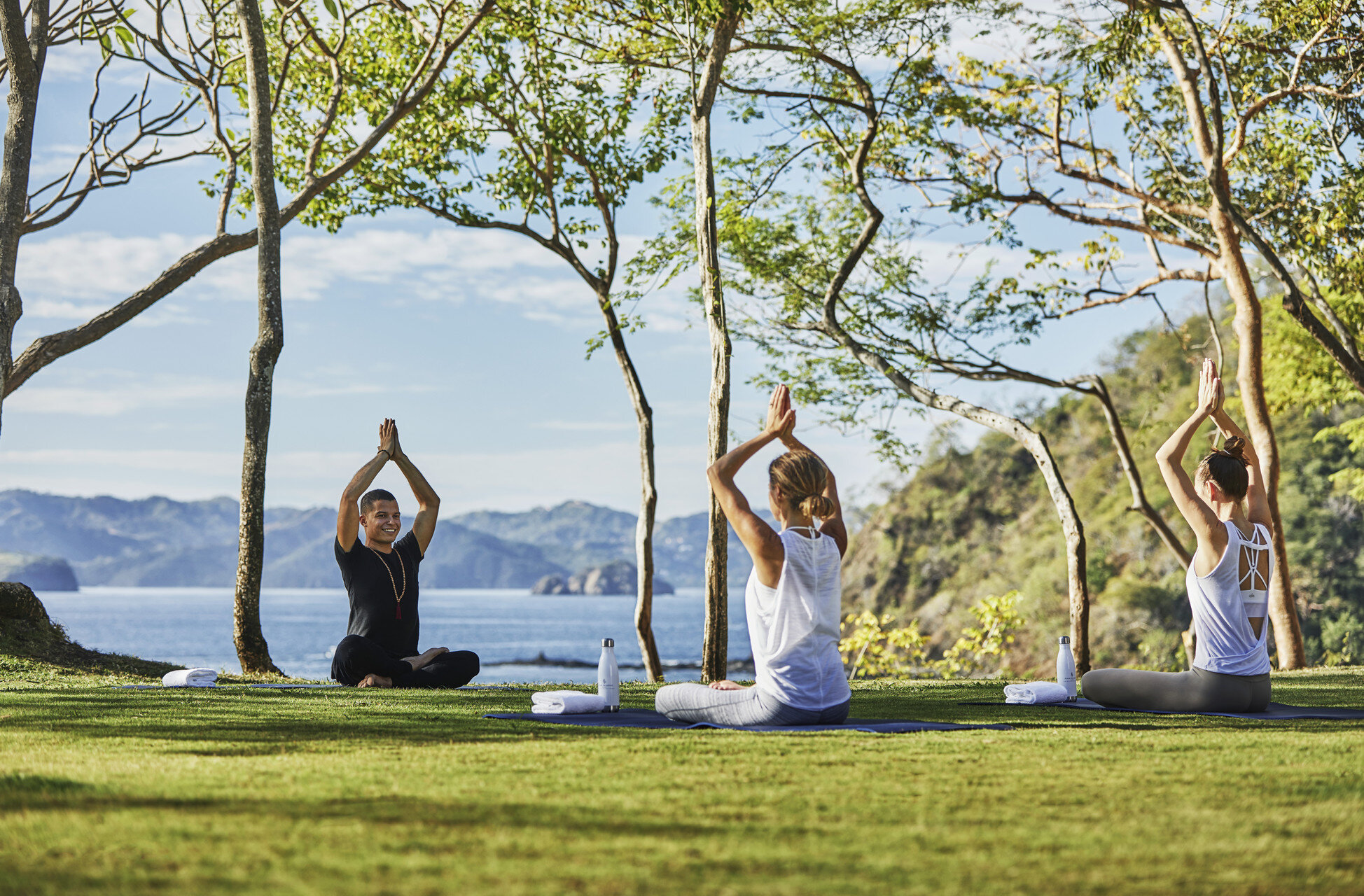A Report from the Rain Forest
Ann McFerran Monkeys Around in Costa Rica
The chef at Cabos Velas prepares a Costa Rican barbeque.
Ann recently returned from a quick trip to Costa Rica where she stayed at beautiful Hacienda Cabo Velas and the Four Seasons. Here she reports back after a successful scouting mission.
Q: What is Cabos Velas and is it good for families?
A: Cabos Velas is a great place for a large family—Christmas would be an amazing time—or a big group of friends. Be forewarned though, it is very authentic Costa Rica so you are going to see some bugs. This used to be a vacation home for a family that lived in London. They still own it and stay there but wanted others to be able to enjoy it. It has six Casas, each with a Master bedroom on the bottom and a completely separate additional bedroom above it. You are literally on the beach which is clean, mostly white sand with some black sand mixed in from volcanoes. There are hundreds (if not thousands) of hermit crabs at night, the occasional sea turtle during egg laying season (while we were there), iguanas (called garrobos in Costa Rica), and much more. [See full description below.]
Q: What was your favorite part of the trip as a whole?
A: Can I have two? I love horseback riding and rarely get to do it, so I seize the opportunity any chance I get. We rode the horses to the top of this hill for sunset drinks and appetizers. It was incredible. I also went on a hike one morning to some of the beaches and saw the most beautiful scenery. There are five beaches—one for everybody, whether you want to surf, have little ones and need very calm water, just like to walk a long stretch of beach, fish, etc. They are all either easy to hike to or a five-minute car ride.
Q: Costa Rica isn’t necessarily known for its cuisine, but what was your favorite meal?
A: A wonderful chef, who was only 29 years old, cooked a beach barbecue for us on the last night at Cabo Velas. The dinner was delicious and healthy, and he cooked everything over a tiny grill he had created by our table. It was just soooo good.
Q: What is one interesting fact you learned about CR that you didn’t know?
A: I think people, myself included, do not think of Costa Rica as a beach vacation. This is truly what it was at this Cabo Velas. You cannot do much during the day as far as horseback riding/hiking because of the heat, so going to the beach is a great option, and the water is just beautiful. I don’t think anyone in our group expected such pretty water and white sand so we were pleasantly surprised.
Q: Did you befriend any monkeys? See any interesting wildlife?
A: Coati and plenty of howler monkeys at Cabo Velas and lots of iguanas at both properties. I also saw a few white-faced capuchins at the Four Seasons on their “Trail of the Giants” golf cart tour along the course—which doesn’t even feel like a golf course because it’s so immersed in nature.
Q: Even though your stay at the Four Seasons was all-too-brief, did you get to take a class or get a spa treatment and did you sleep soundly on that world-famous FS bedding?
A: I felt like I took a three-hour nap following a meditation class! As soon as I got to my room, I was done for the night—took a nice bath in the huge tub, ordered some room service, and fell asleep immediately on the most comfortable bed.
Q: That’s Four Seasons for you!
More info on Hacienda Cabo Velas:
Hacienda Cabo Velas is an estate on the North Pacific coast of Costa Rica, in the dry and breezy Guanacaste region. It comprises 1,700 acres of woodlands, open fields and hills on a peninsula with over four miles of beaches. Easy to get to, Liberia’s international airport is less than an hour’s drive, it has room for up to 16 in four thatched-roof ranchos about 50 yards from the main beach and just steps away from the main rancho.
Ann reports that Cabo Velas is the perfect retreat for active, nature-loving families and other small groups. Aside from enjoying the five extraordinary beaches and watersports like kayaking, paddleboarding, snorkeling, and fishing, you can also enjoy the unique elements of ranch life—horseback riding and, for kids, interacting with the resident farm animals. There’s also a naturalist on staff for those who want to learn about the rich flora, fauna, and migratory and shoreline birds.



